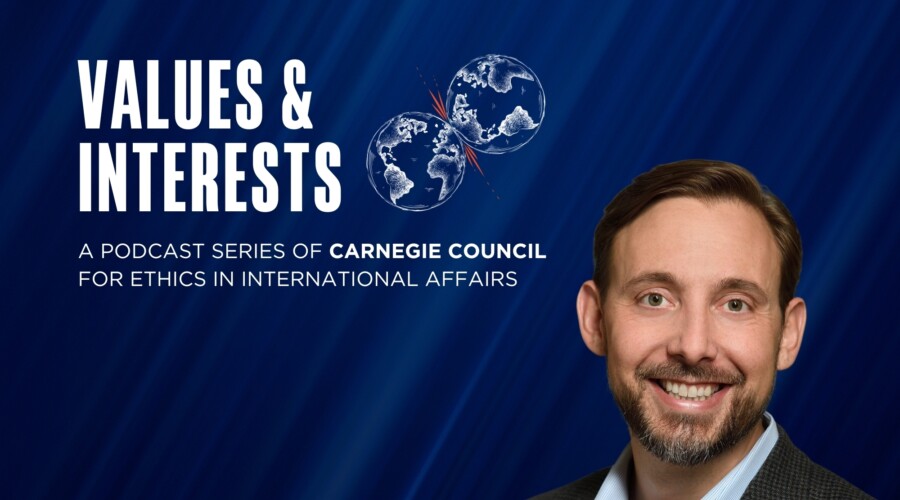Please go to the bottom of the page to download a PDF containing two U.S. Army Powerpoint presentations given during this discussion, one on strategic leadership and one on leadership in combat.
On February 26, 2011, members of the Carnegie New Leaders program (CNLs) visited the Fort Hamilton Army base in Brooklyn. The aim of the visit was to learn from highly accomplished military officials which talents are important to strengthen our leadership skills. The discussions were held off-the record.
Fort Hamilton is one of the oldest Army bases in the United States and has a profound historical meaning. On July 4, 1776, one of the very first attacks against the British Navy in the New York Bay was launched from the site of the future base; a small American battery there fired on HMS Asia and caused damages and injuries. The site was again instrumental in protecting New York City during the 1812 War against the British. After 1826, the garrison continued to grow as part of the defense system of the Bay and the mouth of Hudson River.
After a quick tour of the site and the facilities by bus, we went to the Community Center and met with our speakers. In the panel were Army Brigadier General Peter A. DeLuca; Army Col. Randy George; Army Col. Michael J. Gould; and Commander Erin A. McAvoy, who was the only female and the only Navy officer among the speakers.
The discussions took the form of an interactive dialogue between the officers and the CNLs. The aim of the talk was to define the key elements for a strong leadership in military strategy and how those elements could be functional in other professional environments, such as the financial sector, non-governmental organizations, or public service.
The panelists also gave an overview of the Army's organization and resources. The Army's annual budget is at $141 billion, which makes it one of the largest "industries" in the country, especially if compared to Exxon's annual operating budget ($35 billion) or Chevron's ($43 billion). There are 553,000 soldiers on active duty and 563,700 reserve component soldiers. The core values of the Army are the defense of the Federal Constitution and Principles and respect of the civilian control over the armed forces. The officers repeatedly referred to the strong sense of service to the country and its democratic institutions. Core values are also the foundation on which to build up any solid path of leadership, regardless of whether for a military or civilian organization.
The first step of our analysis was to define what a strategy is. In this regard, we noticed that both the Army and civilian management follow a similar track. In order to achieve the pre-determined goal, the strategy will depend on which instruments are available; which resources could be deployed; and in which arenas it will be implemented. The leader has to be able to understand the context, to define the problem, and to have a view of the path to reach the goal. Strategic leaders focus on different tasks, including developing a common vision and a common culture, shaping the external environment and, foremost, building the team.
The second step of the discussion was to define what makes a leader. To become a leader is an ongoing process and depends on many factors, including the environment you operate in. However, the officers highlighted three basic elements.
- The first one is to demonstrate competency in your field, or, in other words, to become an acknowledged authority in your expertise.
The second is to be completely able to understand and to orchestrate all relevant fields, which means that a good leader can use a multitude of tools and has an understanding of all the relevant fields of work that he or she might be involved in.
The last element is the capacity of inquiry and advocacy, or to critically make an assessment of what is important and why do we do what we do. Inquiry is also important for a good advocacy. The leader must be capable of knowing in depth any aspect of the particular subject and its related fields and at the same time she/he must be able to build a public strategy to get support and consent.
We could say that the leader has a double face or "head." One head is dedicated to analytical and control qualities, while the other works to shape a public strategy, to speak out and to interact with the external environment. None of these tasks would be possible if the leader is not able to build and to motivate a good team. Both the analytical and the advocacy parts are implemented with the assistance of good, selected collaborators. One of the most frequent mistakes is to make easy conclusions, often by trying to be quick and simple. Quick assessments are often wrong. To avoid superficiality, we have to develop the willingness to double-check and to revise our first considerations and impressions.
Empiric confirmation is also important to verify the assessments. In the Army, officers are encouraged to seek out evidence that disproves a strategic framework. A strategy based on superficial or fragile grounds could lead to unrealistic expectations, instability, lack of progress, and waste of resources.
Then we moved to the final element of our analysis: team building. Team building does not mean only to make sure that everybody works in order to reach the goal and to develop a common vision; most importantly, it means to embrace and enable the highest potential of each person in relation to the team.
Besides outlining the military mindset's attitude towards leadership, the panelists talked about their experience in combat. They had first-hand experience in military campaigns, some of them in very difficult operational scenarios. When you lead a unit, discipline and common standards are essential. Respect for the superior and for the comrades is never negotiable. Control over the work of the other unit members and genuine interest in them as people are important to build the sense of belonging to the team. Counseling and helping subordinates improve have proved to be relevant for the long-term success of operations.
The panelists stressed the very great importance they place on ethical standards. Military values constitute a valid pattern for the creation of a team and for its guidance. When you decide to be part of a team, you should offer loyalty to values and to other colleagues or superiors, commitment to your tasks, respect for others, and integrity. As young members of the Carnegie Council, which was founded to promote common ethical principles in international affairs, the importance of values and standards in military leadership became the most significant part of the discussions.
Nowadays, the U.S. Army is part of international defense systems such as NATO and ANZUS, and is at the ready to respond to possible counterinsurgency campaigns; to build military capacity in other nations and to assure solid alliances among them; and to deter and defeat hybrid threats and hostile state actors. We live in a complex and interdependent world. How has the concept of war changed in the 21st century? About two centuries ago, the Prussian General Carl von Clausewitz wrote that war is the continuation of politics by other means. In modern times, weapons like nuclear or plutonium bombs could potentially destroy entire countries or even continents. There are more and more unresolved, long-lasting conflicts. The consequences of war are less predictable. Non-state armed actors as part of conflicts have become more of a rule rather than an exception. Is Clausewitz's assessment still relevant today, or are scholars like David Keen are right when they say that the war has become an end or goal in itself? We agreed that the United States has kept the original structure of power where the armed forces are under the control of the civilian government and that war is an instrument of the policies decided by the elected representatives; but in the rest of the world the forces behind war and peace have become more complex and the challenge for the future leaders is how to handle and balance the variety of approaches.
--The Carnegie New Leader Members
Contributed by Alberto Turlon and Devin Stewart



